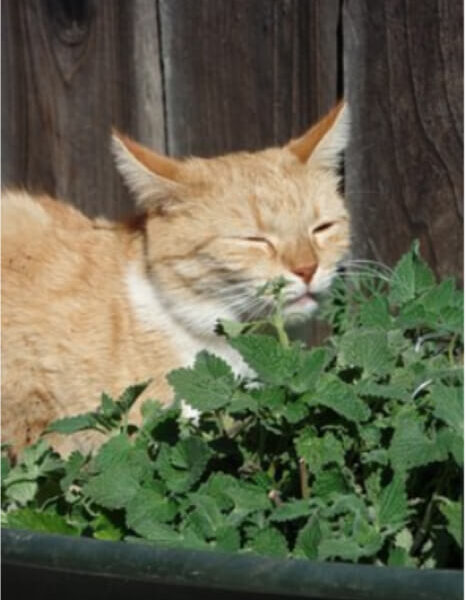How if you are a cat parent, then you’re aware that catnips are powerful on cats. If you bring it home, your adorable cat will definitely find it.
When this happens, the cat starts to rub their head or shoulder, lie low, dash around with excitement, or even chew. In some scenarios, the cat eats the catnip and then swallows.
In our article, we shall dig into everything about catnips, what they are, their effects on your cat, and everything else you need to know. Let’s get started.
What are catnips?
Catnip is a herb or a plant that belongs to the same family as the mint plant. It normally produces a chemical that covers the leaves, seedpods, and stems.
The cat family, including the bigger cousins such as the lions as well tigers like chewing this plant. The stems are thick while it’s covered with some hairs.
How does catnip affect the cat?
Pundits believe that the chemical produced by the plant attracts cats and triggers some kind of response.
When the cat gets to sniff on the catnip, she or he will start to rub, roll, lick, chew, or eat.
This process helps in releasing oil found in the leaves. When this oil finds its way to your cat’s nose, it gets to the nasal cavity, which subsequently triggers the brain nerves responsible with behavior.
The effects can last for a few minutes, and every cat reacts differently. If your cats inhale the plant for longer periods, then the effect will be stronger.
The first reaction is to sniff, lick, roll, and to rub cheeks. Some cats may stretch, drool, jump, mellow, and become hyperactive.
As a pet parent, should you get worried?
Although your cat may react differently, the effect is short term and no reason to worry since once your pet has had more than enough, they will leave.
A cat may stay away from the catnip for a while before returning for another dose.

It’s important to note that some cats may not react to catnips. Research has shown that attraction to catnips is hereditary.
Very young kittens may not react to the effects of the catnip plant. However, from the ages of three months, you might start noticing your cat sniffing the cat.
Is it advisable to have catnips at home?
Yes, catnips are generally harmless. They encourage your cat to explore, play games and are a training tool.
The best catnip trains your little cat to scratch. You can place a small piece so that the cat can scratch. If you have a new cat at home that is probably afraid of getting into the house, you can use a catnip to lure her inside.
Veterinary doctors use catnips to help cats deal with stress. The same applies to foster homes and shelters.
The good news is that catnips are natural and don’t contain any toxins.
However, it’s important to use only small proportions since a lot of it can cause stomach upsets such as vomiting and diarrhea.
For you to ensure your cat stays happy and plays with his toys, you can sprinkle some catnip powder on the toys.
Since catnip is purely organic, you’ll not have to worry about any negative effects. The smell is enticing, and your cat will love scratching and rubbing.
If you have a small garden, you can grow catnips there. They grow well during spring when the sun is high.
For preservation, you can store it in the refrigerator. Keep it frozen in a tightly closed container.
Conclusion
From our discussion, it’s evident that catnips are absolutely harmless to cats.
They grow naturally and their effects on cats are simply natural. That is why you’re bound to see the cat scratching, rubbing, and rolling whenever they sniff a catnip plant.
They help reduce stress levels on the feline friends. They are also excellent at encouraging cats to scratch and play.
They entice new cats into homes and when you rub toys with the catnips, your cat will play more. Hopefully, now you have a better understanding of what catnips are and why you shouldn’t get worried when your cat sniffs on the catnip.
If you have them at home, then you’ll appreciate their usefulness.




